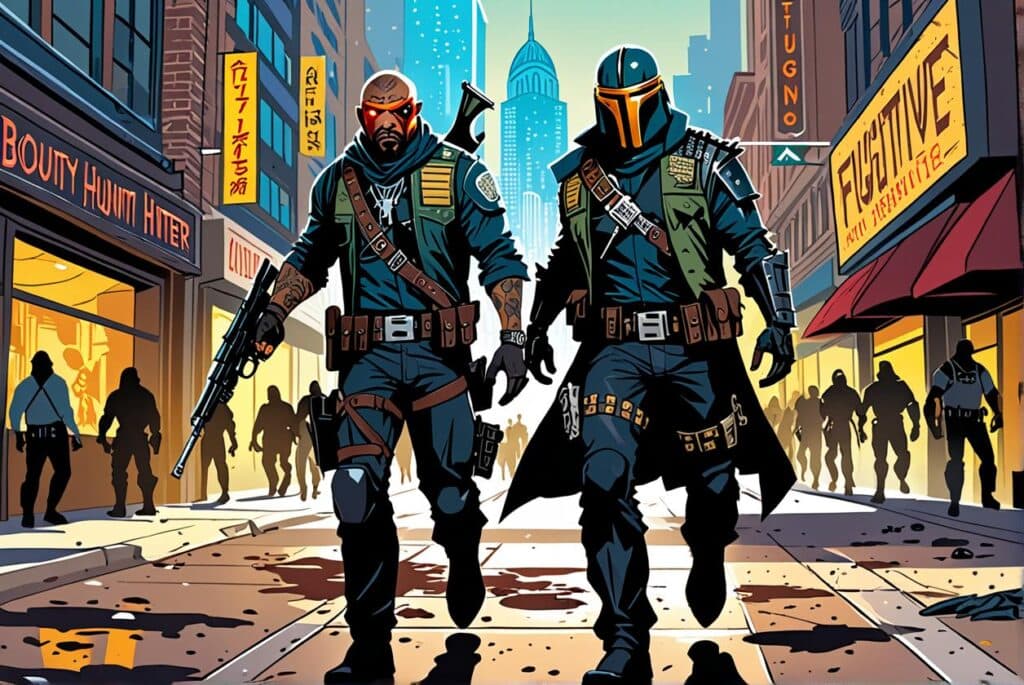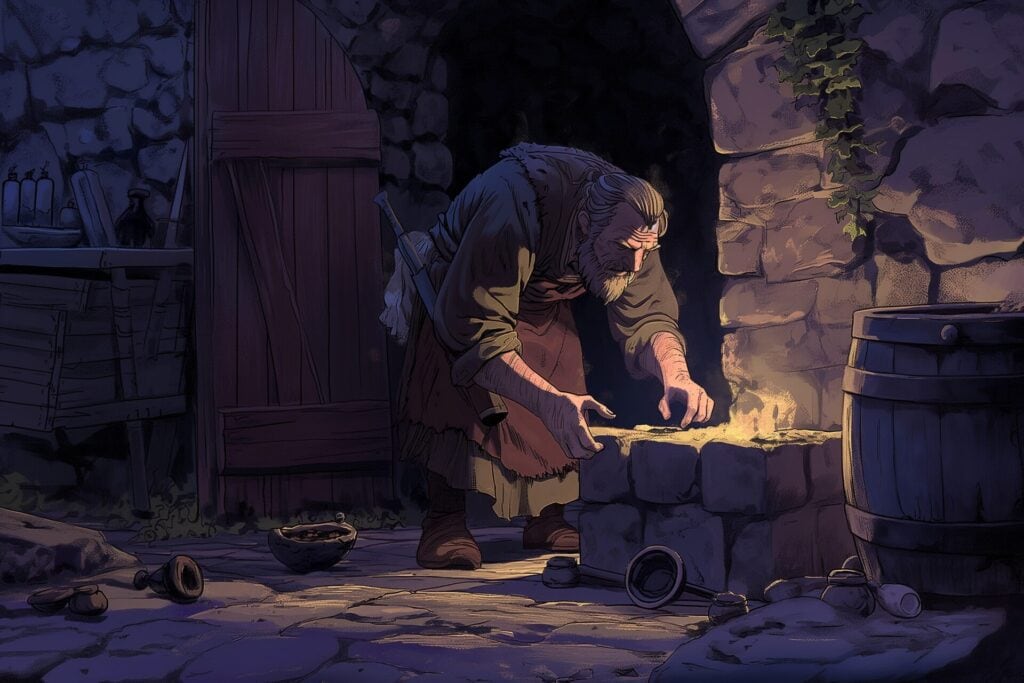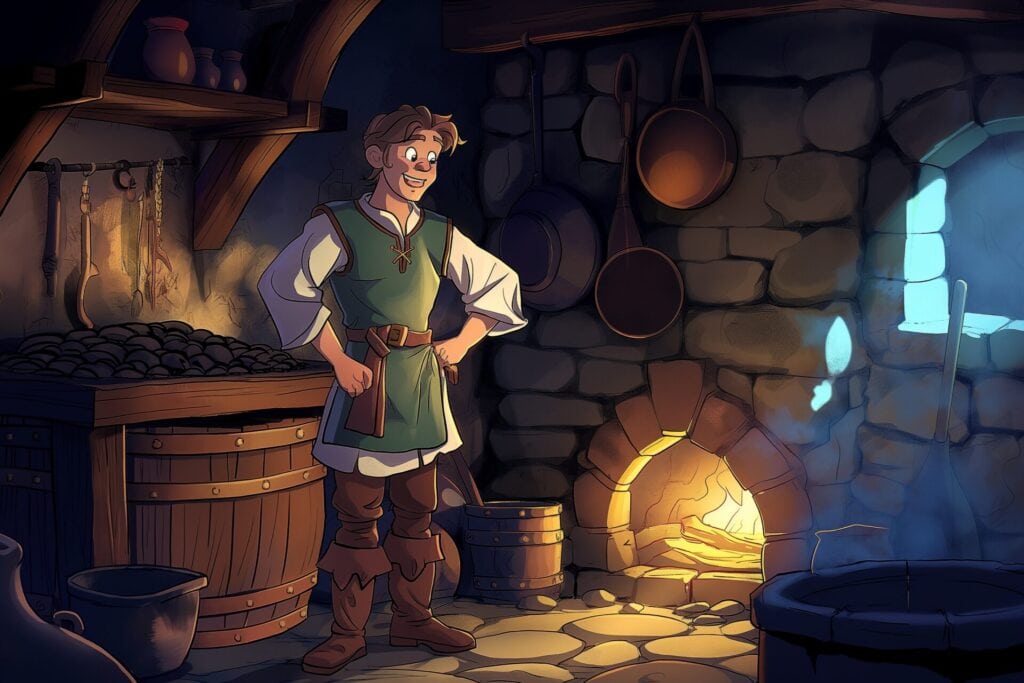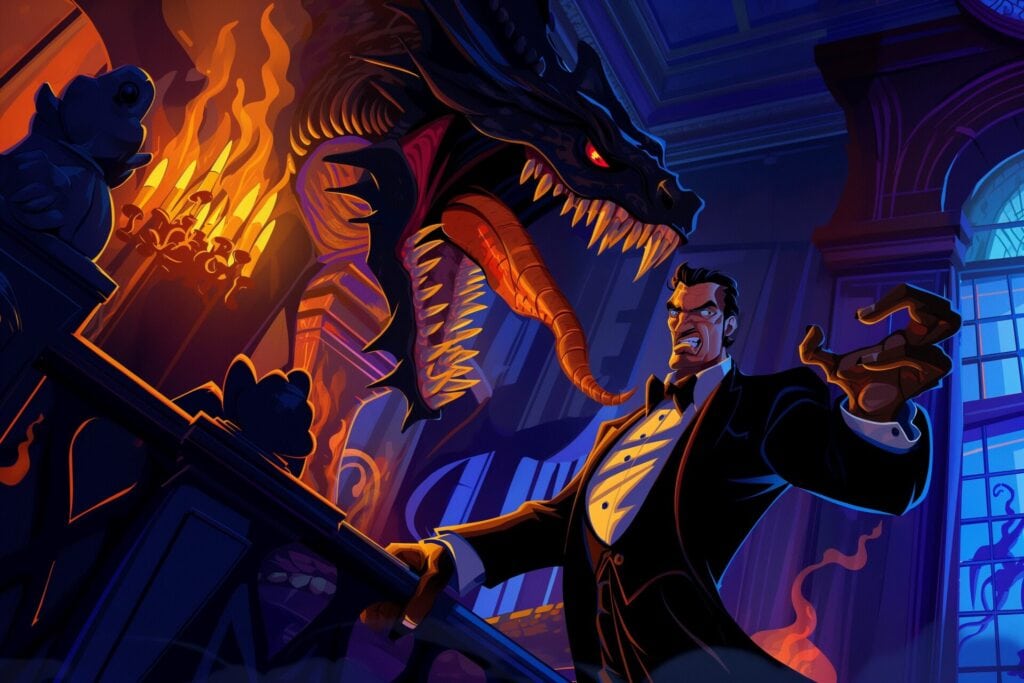5 Tips on Writing: With Drew Lewis
Hey, folks, I’m Andrew, but everyone I know calls me Drew. I’m a writer and narrative designer passionate about fantasy and sci-fi stories, although if you give good characters and a good story in any genre then I am sold. My free time is consumed with ideas for new stories that I’ll either jot down ready for my next novel or try to implement in my next DnD game.
In my younger and more impressionable days, I was subjected to a wealth of characters from all across the genres. Characters such as Samwise Gamgee (Lord of the Rings), Cloud Strife (Final Fantasy 7), Joel and Ellie (The Last of Us), and Kylar (Night Angel Series) helped shape and mold my love for storytelling. Countless hours were spent learning from these people, and to me, that’s who they were, not just characters but real people. Now as an adult who primarily works within the gaming industry, I feel honored and incredibly lucky that I am able to craft similar moments for other people/players/readers.
Hooking Your Audience

Put simply, a hook is just a promise. And character needs to be at the center of that promise. Not plot. We all love a great story, but it’s difficult to connect with a story. There’s no emotional attachment to the happenings of a plot. But there is for the characters within a plot. The struggles they go through. The trials they overcome. The ultimate victory born of the sacrifices along the way. All of this needs to be promised. And there are a few different ways you can do this.
A tried and true method is to engineer situations that feed off your viewpoint character’s vulnerability. Such situations will allow you to play around with their empathy scale:
– Likeability, audience opinion based on viewpoint character actions
– Proactivity, is your viewpoint character active or reactive
– Competency, how skilled is your viewpoint character
Playing with these raises immediate questions about how your viewpoint character is going to react to any given scenario. Giving us a first impression of who this character is. Remember, raw, primal emotions are something we all understand. They’re inherently relatable.
You can also introduce other characters that either share or oppose your viewpoint character’s state of mind/ideals. Either will create a state of tension. Two characters can share an OOD (Object of Desire) but they likely share it for different reasons, or at the very least have different methods for obtaining whatever their OOD is. Whether these characters share your viewpoint character’s OOD or not, this is fertile ground for establishing connections (and you get bonus points if you can sprinkle in some worldview biases as well.) All of this will endear either empathy or curiosity in your reader.
On the more technical side of writing, you as the author must decide on story POV style. Are you being brave and tackling 1st person limited? Will you stick to industry standard and choose 3rd person limited? Or are you that insane maverick who needs snapshots of every character’s emotions and reactions and so choose 3rd person omniscient? Whatever narrative style you choose, it is imperative that you primarily present your story through active voice. This is not to say passive voice doesn’t have its place, and can often help with pacing, but active voice will put your reader/player/viewer in the driver’s seat of the scene, doubly so for an opening scene.

Mastering Plot Development
For me, the plot is the world state set by every character—be they alive and kicking or dead and not kicking—mixed together with the viewpoint character’s ultimate OOD. Every character contributes in their own way to the world state, and every character is influenced by its change.
Some characters are more important than others. Such as a typical antagonist, who seeks to upend the status quo the current world has enjoyed and move forward to obtaining their own OOD. When this happens, the viewpoint character and their allies must react according to who they are, and what they believe. Beliefs and desires that could (should!) shift over time. What they wanted at the beginning of your story can’t be the same thing, or if it is then they can’t feel the same way about it.
It brings to mind the well-known adage: “It’s not the destination, it’s the journey.”
For anyone struggling to figure out the next plot beat in their story, then I would suggest revisiting your character’s ultimate OOD, and ask yourself these questions:
– Has it progressed/changed/shifted as the character has learned and grown?
– Does the next plot beat have anything to do with one of my character’s OOD? (The answer to this is usually a YES!)
– Can any of my characters do something that follows a logical character path that would completely upend my viewpoint character’s progress?
Effective World-Building Strategies

My love of DnD has heavily influenced my world-building skills. Early on, I was forced to learn that time and consequence are key factors that always need to be considered. Creating worlds that contain rich and diverse cultures, religions, ways of life, geography, monsters, races, or technologies is totally necessary, but without consequences, these elements remain totally isolated from one another.
Consequences ensure that every single element in your world somehow links to another. Countries/cultures can be friendly, like neighboring allies, or deadly, like neighboring enemies. A vast snow-capped mountain range could be linked to a sheer cliff coastline or vast forest area, both with legends or myths about the deities that supposedly reside there. Religions battle over which interpretation of a deity’s will is correct. New nations can rise or fall as a result. Every action/creation in your world-building has a consequence. Explore these consequences and you’ll find rich areas for new narratives. But the golden rule is this, never change your world-building to serve the narrative. You can expand upon world-building, and for an IP that lasts a long time you definitely should expand, but never change it just because you want to squeeze a narrative. Build a narrative around your world-building, not the other way around.
Time is the other factor to always consider. When shining a light on a certain part of your world, the other darker parts are not frozen in time. For example, your viewpoint character pulls off a daring heist, stealing from a terrible crime boss. That crime boss’ direct competition, or any thug looking to fill a power void, should have a reaction to this heist. This reaction will happen ‘off-screen’ but you as the designer need to take this into account.

Techniques for Character Development
I like to break character development, or a character’s arc, down into the 5 following steps:
– The Event
– Lie
– Want
– Need/Sacrifice
– Truth
What do I mean by The Event?
Something happened to your character before the story started/just as the story starts. Something that will stay with your character for the majority of their arc. The Event shapes who your character is. In terms of revealing The Event to the reader, that’s up to you as a creator. You could be blatant and directly tell your audience. You could be subtle and infer The Event, leaving it up to the audience to fill in the blanks. Or you could keep it completely hidden. That is completely up to you. It bears noting though, that The Event doesn’t always have to be negative.
What do I mean by Lie?
The Lie is who your character tells themself they are. It is a misconception about who they are or what the world is (bonus points for both!) This Lie is the catalyst for all the hurts, trials, and woes your character faces. And more often than not your character isn’t aware they are living a lie. (Enter character/worldview biases.) The character will walk through the world feeling incomplete. Telling themselves that they need X to make themselves feel/become Y.
What do I mean by Want?
When you know your character’s Lie, you can start giving them their Want. Typically this want is something external or physical. Pursuing their Want is something the character thinks will make them happy. It will make them complete. When in actual fact, pursuing this Want reinforces the Lie. And the cycle just repeats and repeats for most of their arc.
What do I mean by Need/Sacrifice?
This is what the character really needs. The internal realization that will move them past the Lie. It’s the fix to make them feel whole. It strengthens their position within the plot. Fills them full of courage/knowledge. Bonus points if you can link this Need/Sacrifice to the promise laid out in the hook.
What do I mean by the Truth?
The Truth is the final state of a character’s arc, but not necessarily the end of their development/journey. The Truth is hard-won. Fought for and sacrificed. The character comes to Terms with the Event that started this arc and moves forward with pride. However, the Truth can have a darker side. It can present even harder questions or moral quandaries for the character to tackle. The Truth has the chance to become your character’s next Event.
Crafting Meaningful Decisions

Meaningful choices in video games and conventional stories tend to differ slightly, but all in all, progression sits at the heart of every meaningful choice.
On the video game side, a meaningful choice will not only influence the outcome of the narrative, but gameplay mechanics as well—or at the very least the way the player interacts with the mechanics. Choosing certain party members over others will have a big impact on combat experiences as well as any personal narrative linked to your party members. The same thing goes for a character’s skill tree as well. Different abilities lean toward different ‘builds’, something that can be closely tied to the role-playing element of many modern video games. Getting X% of critical damage increase doesn’t feel all that great for the average gamer. It doesn’t mean anything to them. But unlocking a new ability that alters an attack animation or unlocks a new skill entirely feels good. It feels like our character is growing in power.
The same sense of progression needs to be applied to narrative as well. Whether your story follows a linear or branch narrative path, each scene, narrative beat, or dialogue exchange needs to leave the reader with a sense of progression. As an author, these moments of non-progression can sometimes be very difficult to spot, because we love our narrative babies so much. It’s natural for us to want to spend as much time with our creations, viewing every moment in their lives as vital to understanding their character.
To combat this, my biggest tip would be to allow people you trust to read what you’ve written. Ask them to go through however many scenes they’re willing to and point out which they feel could be removed. This process is rarely super-fun-enjoyable-time, but it does get easier the more you do it. Something I wish I had been told very early on in my journey is that your work does not need to be in a 100% finished state at this point. What matters at this stage is feedback on the narrative beats. If your drafthas spelling mistakes, clunky sentences, or point-blank blunt action beats then it is okay. These minor points (and in the grand scheme of writing they are minor) can be fixed in subsequent drafts.
What are your strengths in writing and narrative design?
I’d say finding the links between narrative beats. I love diving into a world and figuring out the relationships between characters or nations. Those moments were the one influenced the other.
Other than that, I’d maybe add creating relatable characters. Nothing humbles me more than a beta-reader tells me that felt XYZ emotion when reading through one of my stories. It’s a feeling like no other and I’m eternally grateful that creating such is my full-time job.
Which games or stories have you worked on?

I’ve worked on several different games at this point. Right now I serve as the Lead Narrative Designer for Yotta Games, working on the game Ever Legion. Other games I’ve worked on would be Nexus War, Ace Alliance, Streamwalker Worlds, Naruto: Broken Memories, and a whole bunch of others that I’m grateful for.
In terms of stories, I am excited to share that I am currently working on my next novel. The first book in a fantasy new series titled Gyfted. More on that soon.
Exploring Favourites
A very difficult question to answer! There are so many amazing stories to choose from. So many characters that I’ve connected with and grown with.
Ultimately though, I think a constant favorite of mine is the Kingdom Hearts series. As insane and convoluted as the story has become, the early games hold a special place in my heart.
A Wish for Interactive Audio Stories
I can’t think of just one, so I am going to list a bunch:
- Dragon Age
- The Last of Us
- Dungeons & Dragons
- More Walking Dead
- Dishonored
- Cyberpunk 2077
- Shadowrun Series
- Warhammer 40k
This list could go on and on…
Register for our Free Writing Workshop now!
If you are interested in creating your own interactive audio story, you can apply for our free webinar! It will introduce you to our interactive story game engine, TWIST, and teach you how to use it to create interactive audio stories.
Interested in contributing to our blog series?
If you would also like to publish a blog post on our website and share your own story with interested readers, simply fill out the contact form.





